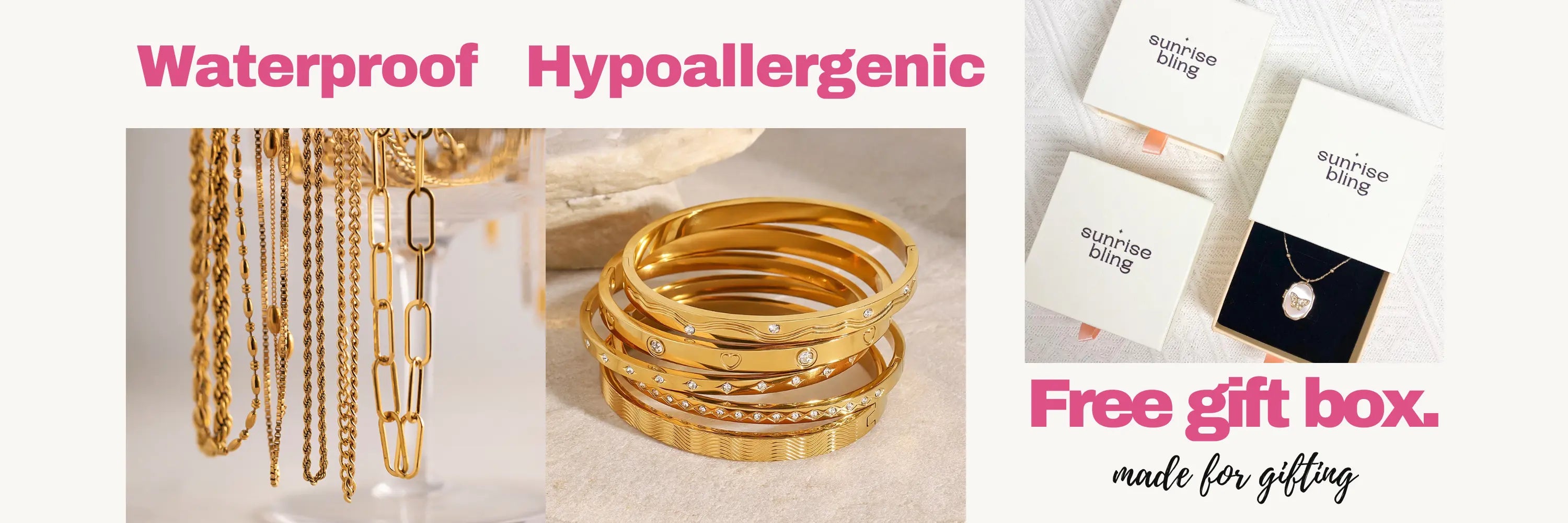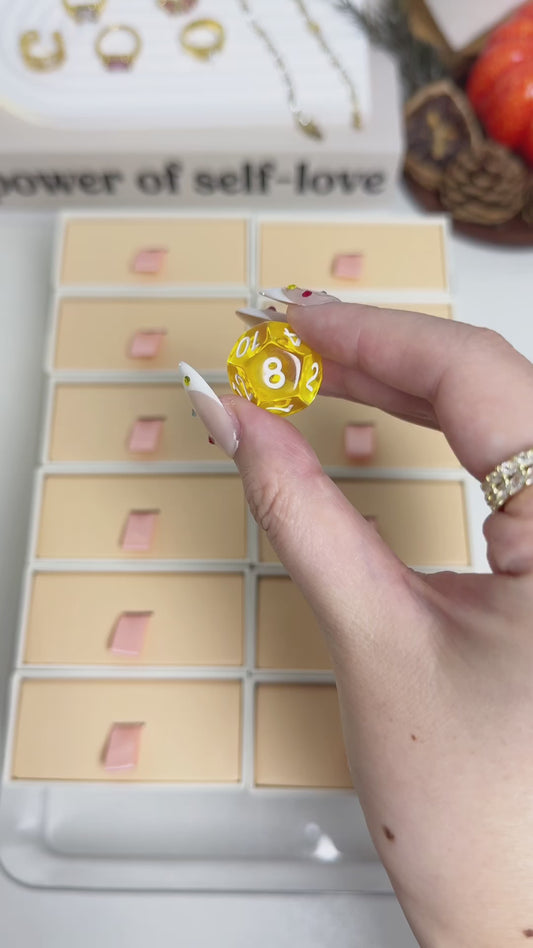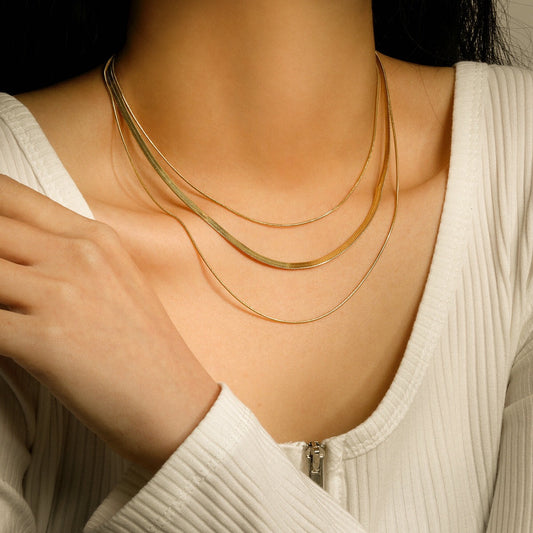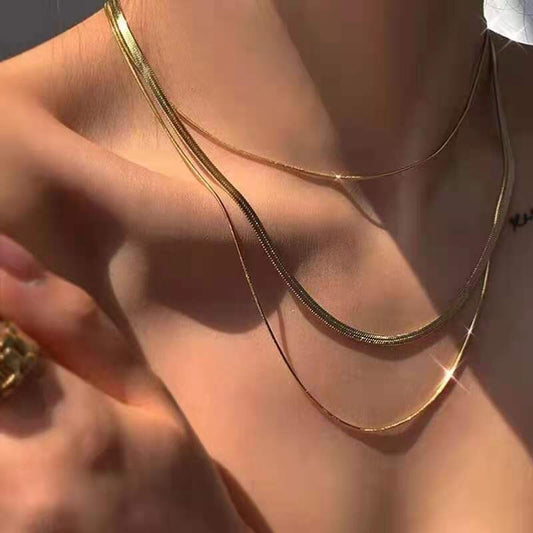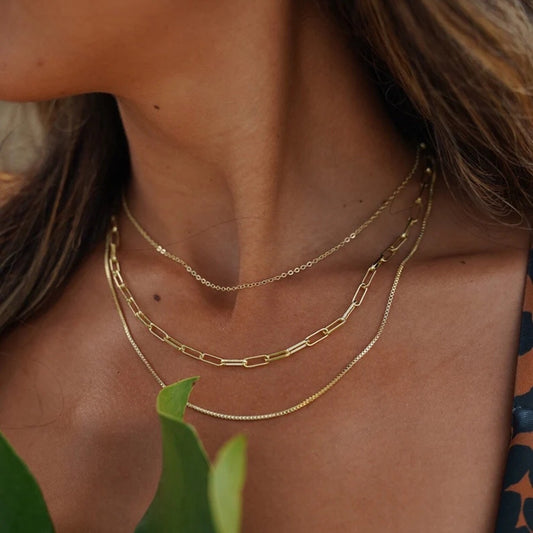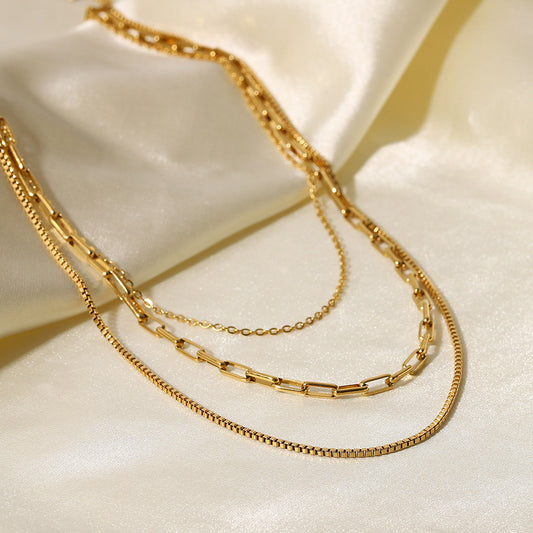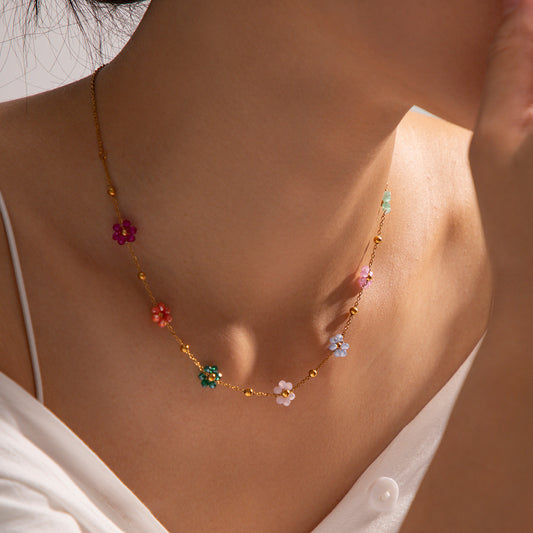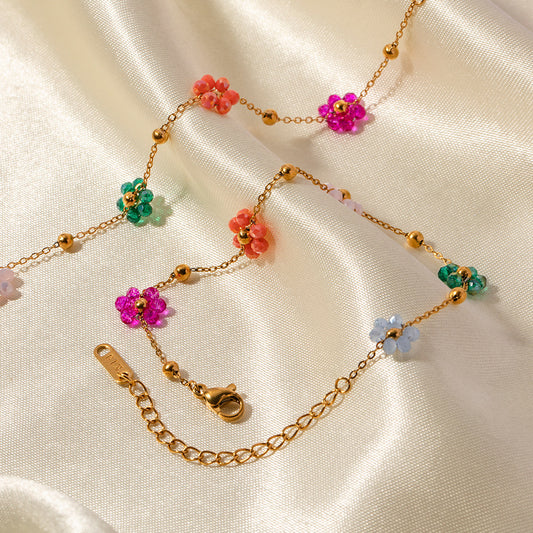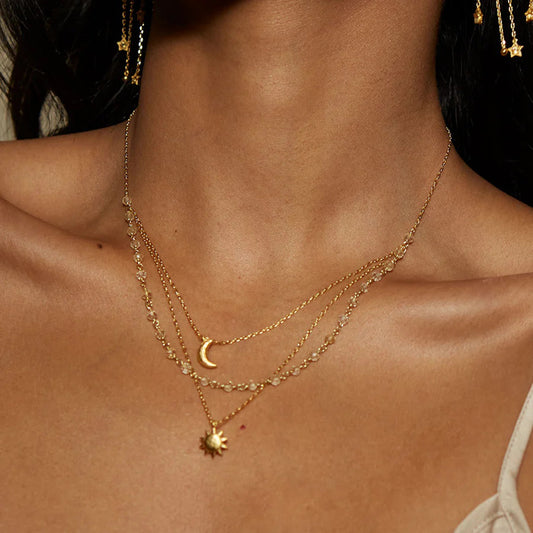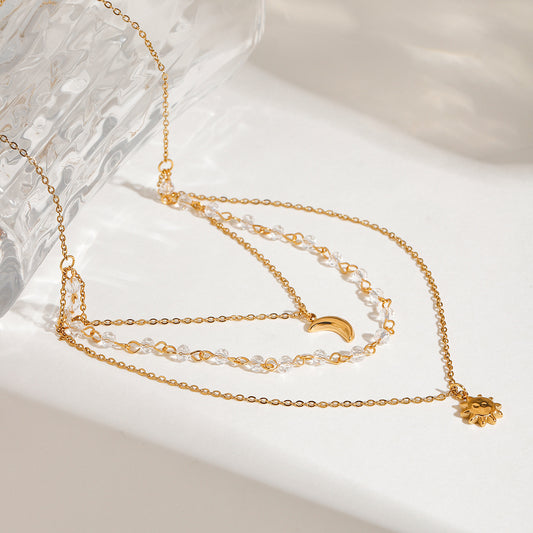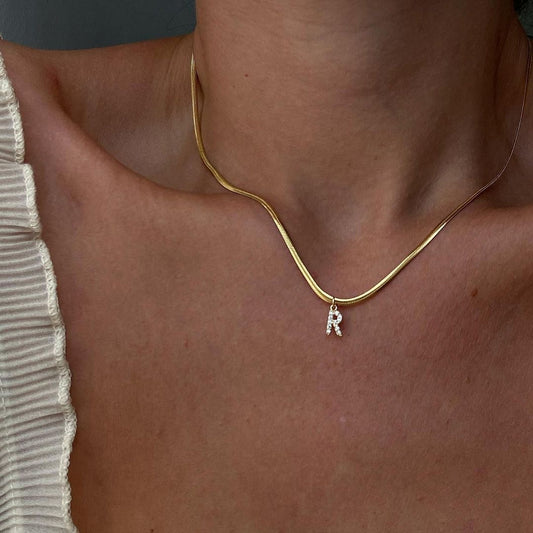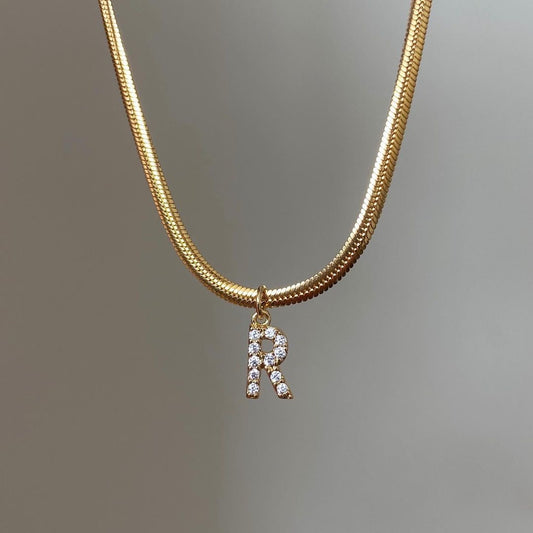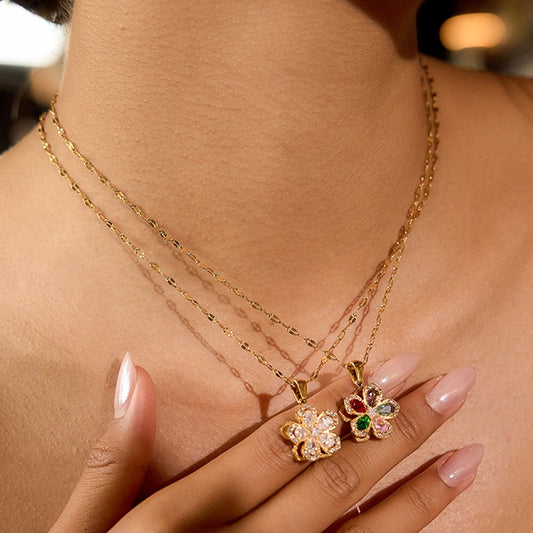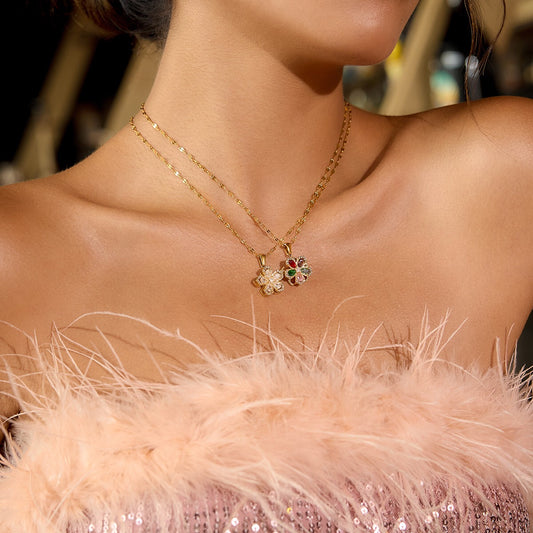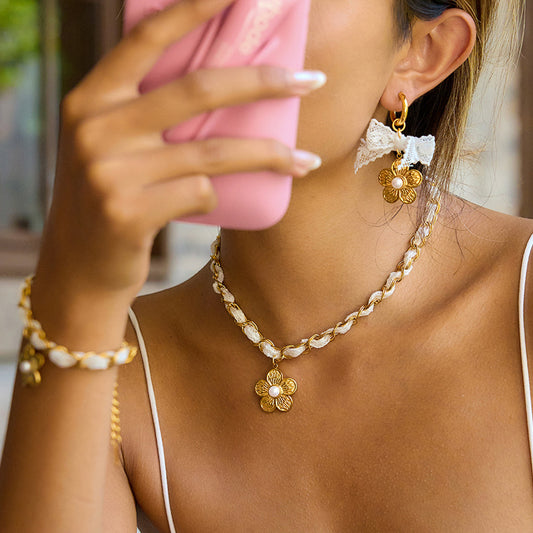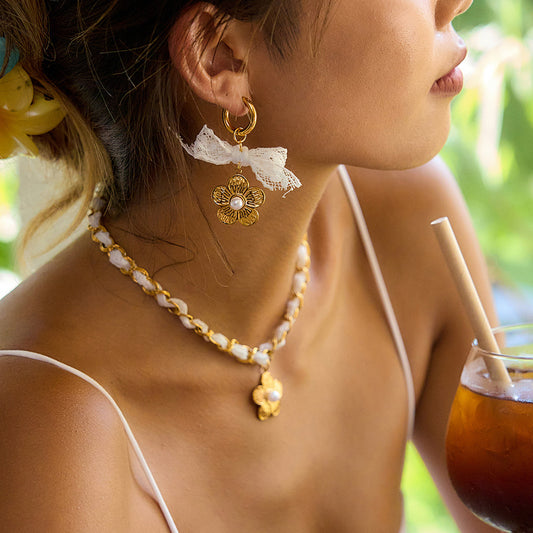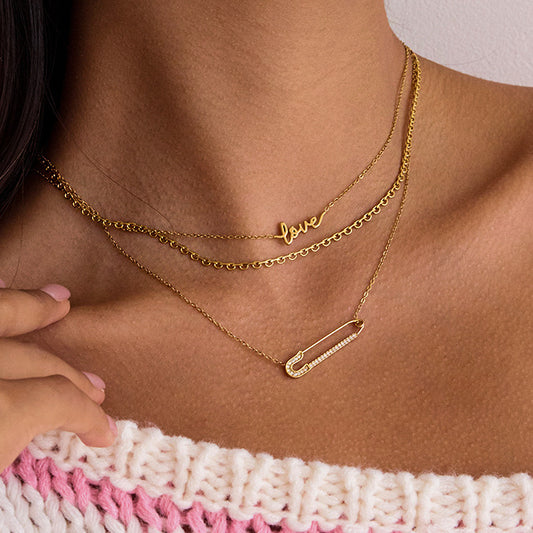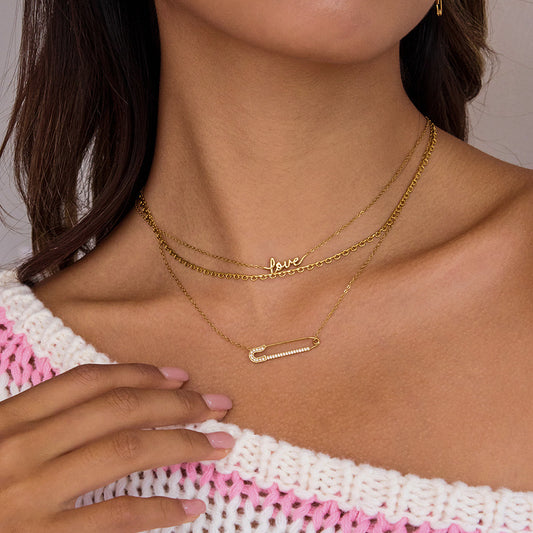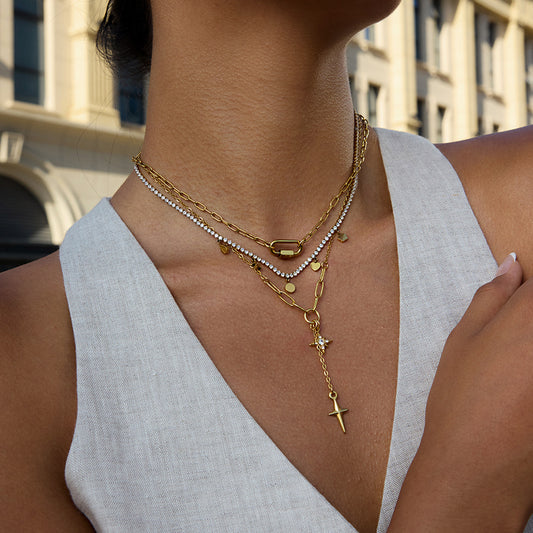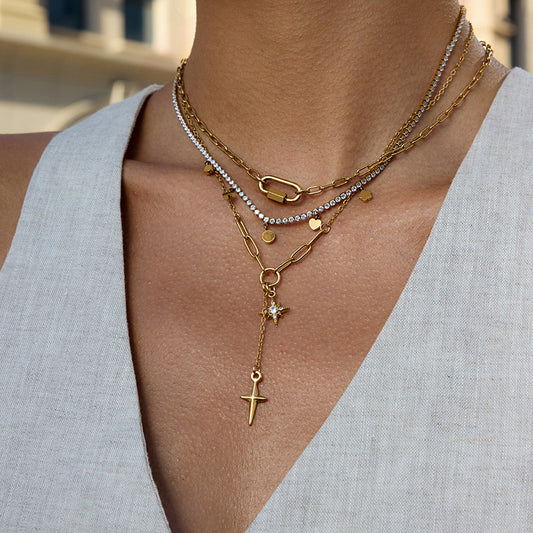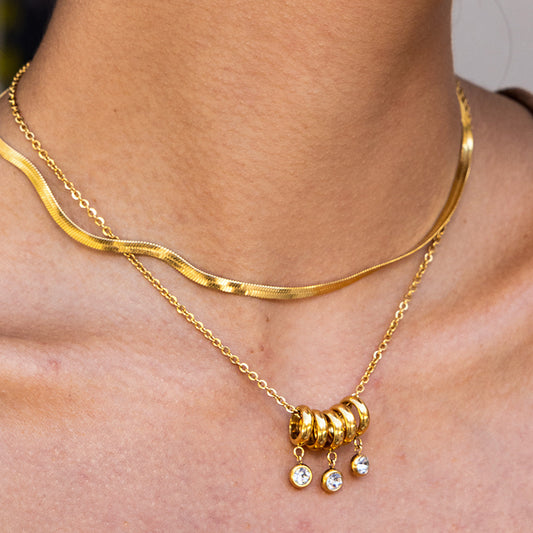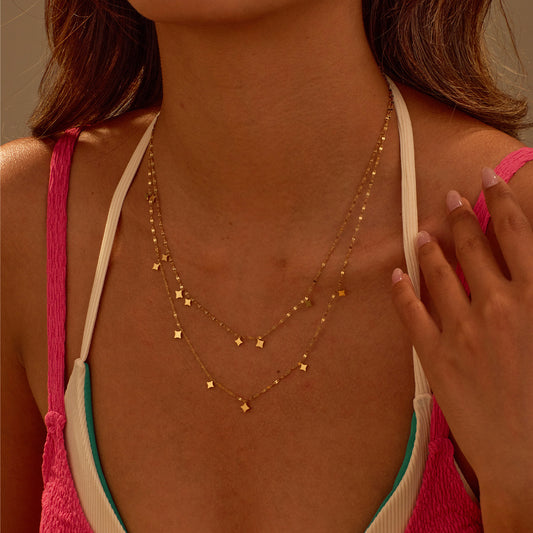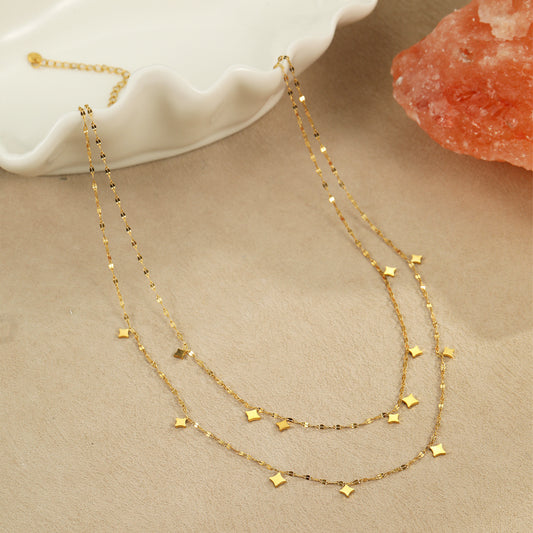Necklace chain is the unsung heroes of jewelry, providing the foundation for countless personal styles. Globally, the online jewelry sales market is projected to reach approximately USD 103.9 billion by 2030, indicating a significant and growing consumer interest in all aspects of jewelry, including the versatile and essential necklace chain. Whether you're looking to showcase a cherished pendant, create a layered masterpiece, or simply wear a chain as a statement on its own, understanding the nuances of necklace chains is key to finding your perfect link.

What is a Necklace Chain?
The Foundation of Your Necklace
At its core, a necklace chain is the foundational element of any necklace. It's the strand, typically made of metal, that encircles the neck and from which pendants, charms, or other embellishments can be suspended. However, a necklace chain can also be worn on its own as a simple yet elegant statement piece.

More Than Just a Strand
Necklace chains come in a vast array of materials, thicknesses, lengths, and styles, each offering a unique aesthetic and feel. From delicate and barely-there strands to bold and statement-making links, the choice of chain significantly impacts the overall look of a necklace.
Why is Necklace Chain So Popular?
Versatility in Simplicity
The popularity of necklace chains lies in their inherent versatility. A simple chain can be worn alone for an understated look, paired with a favorite pendant to personalize it, or layered with other necklaces to create a trendy and individual style. This adaptability makes them a staple in any jewelry collection.
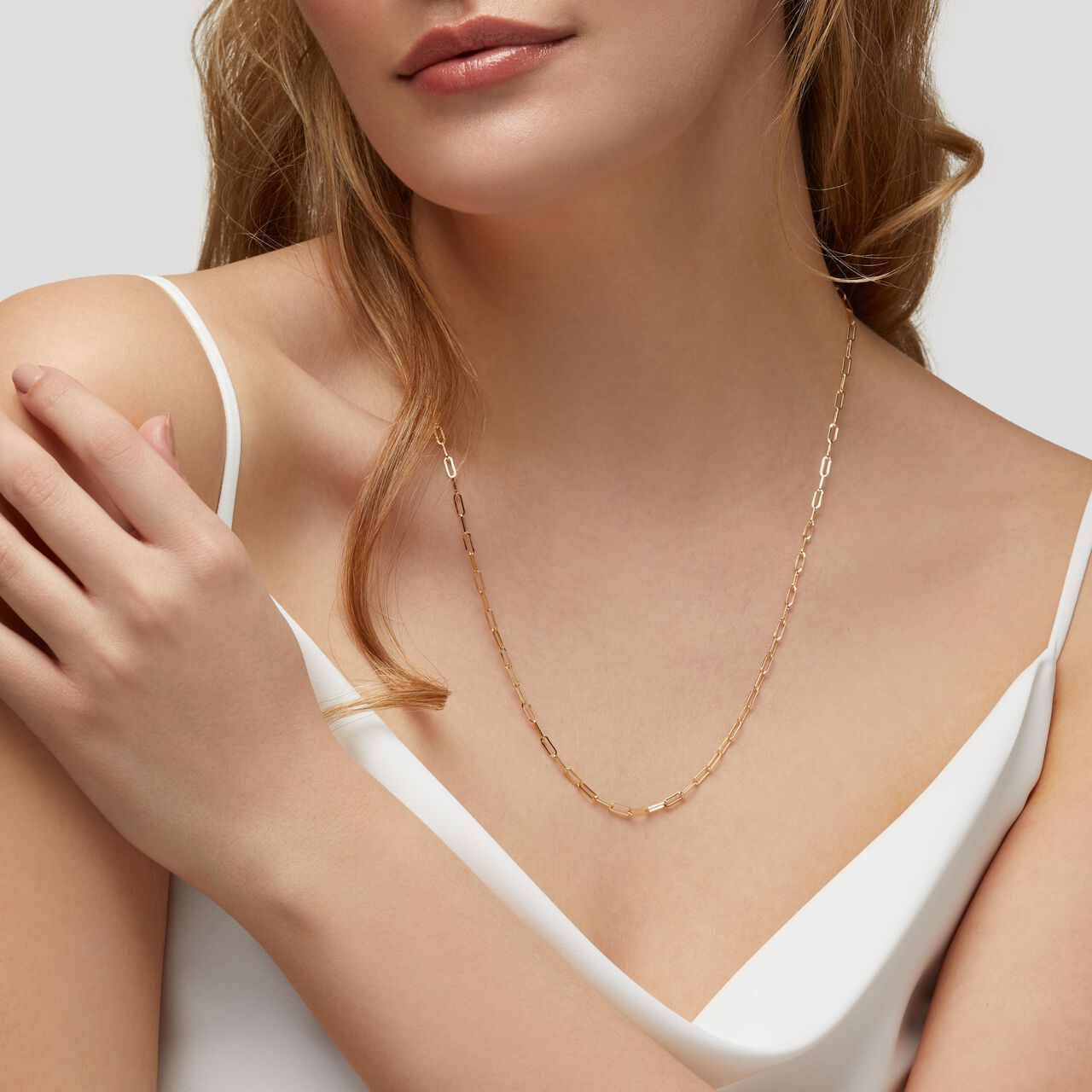
Timeless Appeal
While trends in pendants and embellishments may come and go, the necklace chain remains a timeless piece of jewelry. The classic appeal of a gold, silver, or other metal chain transcends fleeting fashion fads, ensuring its enduring popularity.
Foundation for Personal Expression
A necklace chain serves as a blank canvas for personal expression. By selecting different pendants and charms, individuals can create necklaces that reflect their personality, interests, or significant moments in their lives. The chain provides the essential framework for this customization.
Layering Trend
The current trend of layering necklaces has further amplified the popularity of necklace chains. Different lengths and styles of chains are combined to create unique and fashionable looks, making individual chains essential components of this trend.

Popular Styles of Necklace Chain
Cable Chain: The Classic Choice
The cable chain is perhaps the most common and classic style, featuring interconnected oval or round links. Its simplicity and strength make it a versatile choice for holding pendants of various sizes.
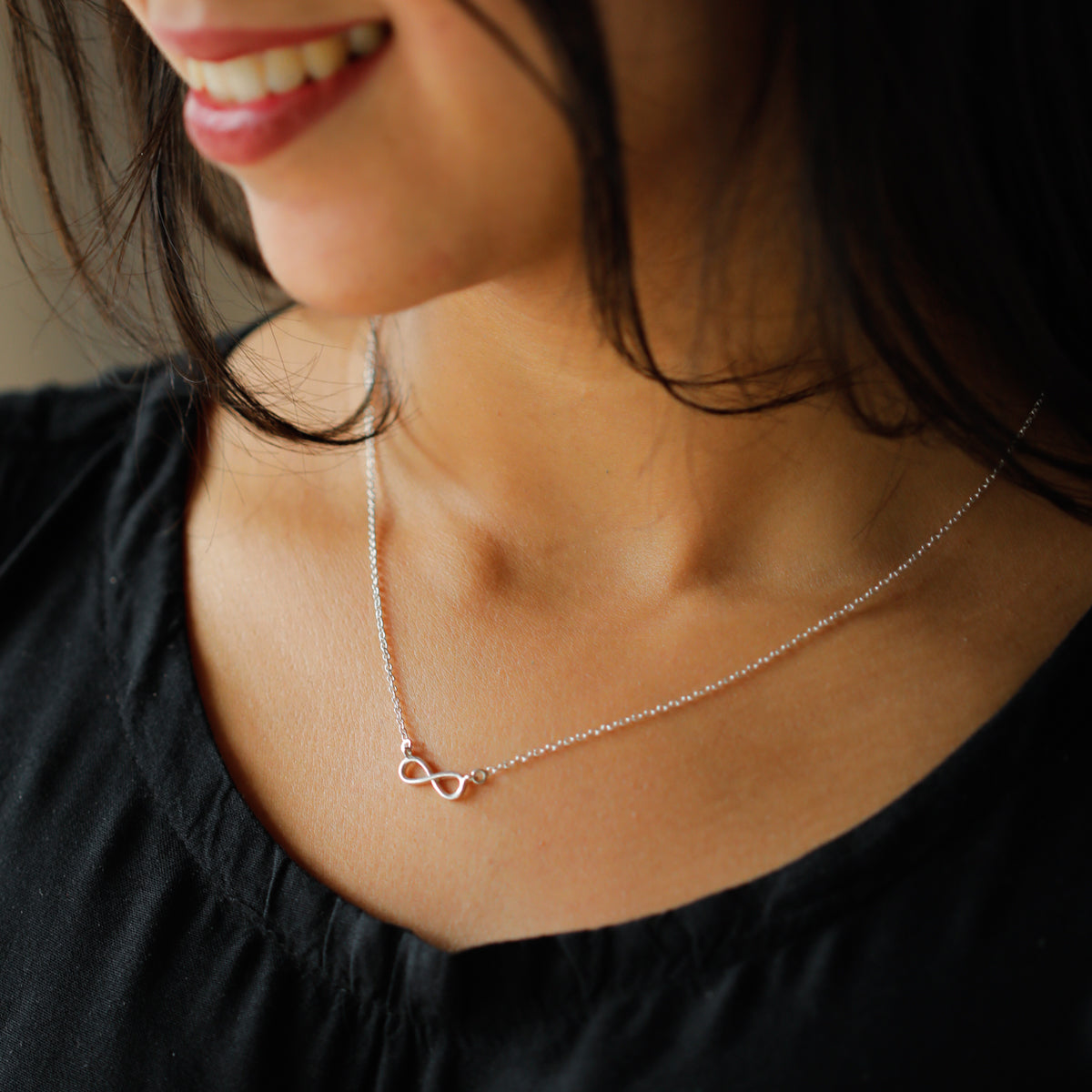
Curb Chain: Interlocking Elegance
Curb chains are characterized by their flat, interlocking links that lie smoothly against the skin. They come in various widths, from delicate to bold, and can be worn alone or with pendants.
Figaro Chain: A Touch of Italian Flair
Figaro chains feature a pattern of flattened links, typically with one longer link followed by several shorter links. This distinctive pattern adds a touch of Italian elegance to any look.
Rope Chain: Twisted Sophistication
Rope chains are made up of links that are twisted together to resemble a rope. This creates a textured and often substantial look that catches the light beautifully, making it a striking choice worn alone or with a pendant.
Box Chain: Structured and Sleek
Box chains are formed by square links connected to create a smooth, box-like appearance. They are known for their strength and sleek, modern aesthetic.
Herringbone Chain: Fluid and Flat
Herringbone chains are flat and wide, with links that are set in a V-shape, resembling the bones of a herring. They have a smooth, fluid look and are typically worn alone as a statement piece.
Snake Chain: Smooth and Sleek
Snake chains are made of tightly connected plates that create a smooth, round, and flexible chain resembling a snake's skin. They have a sleek and sophisticated look and are often worn with pendants.
How to Wear Necklace Chain
Wearing it Solo: Understated Elegance
A beautiful necklace chain, especially in a unique style or a substantial width, can be worn on its own as a simple yet elegant statement. Choose a length that complements your neckline and personal style.
Adding a Pendant: Personalize Your Look
The most common way to wear a necklace chain is by adding a pendant. Select a pendant that reflects your personality, holds sentimental value, or complements your outfit. Ensure the pendant's bail (the loop that attaches it to the chain) is wide enough to accommodate the chain.
Layering Chains: Creating a Unique Statement
Layering multiple necklace chains of varying lengths, styles, and thicknesses is a popular trend. Start with a shorter chain (like a 16-inch delicate chain) and gradually add longer chains (18-inch, 20-inch, etc.). You can layer chains of the same metal or mix metals for a more eclectic look.
Choosing the Right Length: Complement Your Style
Necklace chains come in various standard lengths, each creating a different look. Consider your neck size, the neckline of your clothing, and the desired effect when choosing a length: * 14-16 inches (Choker): Fits snugly around the neck. * 18 inches (Princess): Sits at the collarbone. * 20-24 inches (Matinee): Falls below the collarbone. * 28-32 inches (Opera): Longer, often worn doubled. * 36 inches and longer (Rope): Can be worn long or layered.
Necklace Chain: Perfect Gift for Your Loved Ones
A Versatile and Thoughtful Present
A necklace chain makes a versatile and thoughtful gift for a variety of occasions. Its timeless appeal ensures it will be cherished for years to come.
Consider Their Style
When choosing a necklace chain as a gift, consider the recipient's personal style. Do they prefer delicate and understated pieces or bolder statement jewelry? Do they often wear pendants?
Metal Choice Matters
Think about the metals they typically wear. Gold (yellow, white, or rose), sterling silver, or other metals each offer a different aesthetic.
Mark Special Occasions
A delicate gold chain can be a beautiful gift for a birthday or graduation, while a more substantial silver chain might be perfect for a significant anniversary or holiday. You can also pair the chain with a meaningful pendant to make the gift even more personal.
A Foundation for Future Personalization
Gifting a necklace chain provides the recipient with a foundation upon which they can build their own personalized necklace by adding charms and pendants that hold special meaning to them.
How to Clean Necklace Chain
Gentle Cleaning is Key
To maintain the shine and luster of your necklace chain, regular gentle cleaning is essential.
Soap and Water Solution
For most metal chains (gold, silver, stainless steel), a solution of mild dish soap and warm water works well. Gently rub the chain with your fingers or a soft cloth dipped in the soapy water.
Use a Soft Brush
For intricate chains or those with small crevices, a soft toothbrush can help to remove dirt and debris.
Rinse Thoroughly
After cleaning, rinse the chain thoroughly under clean, lukewarm water to remove all soap residue.
Dry Completely
Pat the chain dry with a soft, lint-free cloth. Ensure it is completely dry before storing it to prevent tarnishing.
Metal-Specific Cleaning
For specific metals like sterling silver, you may need to use a silver polishing cloth or a silver cleaning solution to remove tarnish. Always follow the manufacturer's instructions for these products.
Avoid Harsh Chemicals
Keep your necklace chain away from harsh chemicals, chlorine, and excessive moisture, as these can damage the metal.
How to Measure a Chain Necklace
Lay it Flat
To get an accurate measurement, lay your necklace chain flat on a level surface.
Use a Flexible Measuring Tape
Use a flexible measuring tape (like those used for sewing) to measure the length of the chain from one end to the other, including the clasp.
Standard Lengths
Keep in mind the standard necklace lengths mentioned earlier (choker, princess, matinee, etc.) to help you determine the best length for your needs.
Measuring for a New Necklace
If you're buying a new necklace and want a specific length, measure a necklace you already own that sits at your desired position.
Considering Pendants
If you plan to wear a pendant on the chain, consider how the pendant will hang at different chain lengths.
How to Shorten a Chain Necklace
Professional Jeweler
The most reliable way to shorten a necklace chain is to take it to a professional jeweler. They have the tools and expertise to remove links and reattach the clasp securely.
Removing Links Yourself (with caution)
If you have a simple chain with removable links and are comfortable with small tools, you might be able to remove links yourself using jewelry pliers. However, be very careful not to damage the chain or the clasp. Watch tutorials and proceed with caution.
Adjustable Clasps or Extenders
Consider using necklace extenders with multiple loops that allow you to wear the necklace at different lengths, effectively shortening it when clasped at a shorter loop. Some necklaces also come with built-in adjustable clasps.
How to Untangle a Chain Necklace
Patience is Key
Untangling a necklace chain can be frustrating, but patience is crucial to avoid further knots or damage.
Lay it Flat
Place the tangled necklace on a flat, well-lit surface.
Use Needles or Pins
Use thin needles or straight pins to gently loosen the knots. Insert the tip of the needle into the knot and carefully try to separate the tangled links.
Baby Oil or Lotion (with caution)
A tiny drop of baby oil or lotion can sometimes help to lubricate the chain and make it easier to untangle. Apply sparingly and be sure to clean the chain afterward.
Work Slowly
Work slowly and methodically, focusing on one knot at a time. Avoid pulling forcefully, as this can tighten the knots further or break the chain.
How to Get Hair Out of Necklace Chain
Tweezers
Small tweezers are often the most effective tool for removing stray hairs that get caught in a necklace chain. Carefully grasp the hair as close to the chain as possible and gently pull it out.
Needle or Pin
A fine needle or pin can also be used to tease the hair out of the links. Gently work the tip of the needle under the hair and try to lift it away from the metal.
Patience and Gentle Movements
Avoid tugging or pulling too hard, as this could damage the chain or further entangle the hair. Work slowly and gently.
How Do You Fix a Broken Necklace Chain?
Simple Breaks
For simple breaks where a link has come apart, a jeweler can often easily resolder or reconnect the link.
Broken Clasp
A broken clasp is a common issue and can usually be replaced by a jeweler with a new one.
Multiple Broken Links or Severed Chain
If the chain has broken in multiple places or a significant section is missing, repair can be more complex and potentially more expensive. A jeweler can assess the damage and advise on the best course of action, which might involve replacing a section of the chain.
Professional Repair is Recommended
For any significant damage to your necklace chain, it is best to take it to a professional jeweler for repair. They have the expertise and tools to ensure a secure and lasting fix. Avoid trying to make complex repairs yourself, as you could cause further damage.
Frequently Asked Questions About Necklace Chain
What are common necklace chain materials?
Common materials include gold (yellow, white, rose), sterling silver, stainless steel, platinum, and various alloys. The choice of material affects the necklace's appearance, durability, and price.
How do I choose the right necklace chain thickness?
The appropriate thickness depends on the pendant you plan to wear (if any) and your personal style. Delicate pendants pair well with thin chains, while heavier pendants require thicker, more durable chains. Thicker chains can also make a bolder statement when worn alone.
Can I mix different metal necklace chains when layering?
Yes, mixing different metal colors like gold, silver, and rose gold is a popular and trendy way to layer necklace chains. Just ensure the styles and weights of the chains complement each other.
How often should I clean my necklace chain?
The frequency of cleaning depends on how often you wear the necklace and your skin's natural oils. Generally, cleaning your necklace chain every few weeks or whenever you notice it looking dull is a good practice.
How should I store my necklace chains to prevent tangling?
The best way to store necklace chains is individually. Use small jewelry pouches, separate compartments in a jewelry box, or hang them on a jewelry stand with individual hooks.
Necklace Chain: The Essential Element of Style
A necklace chain is more than just a means to hold a pendant; it's a fundamental element of your personal style. Whether worn alone for understated elegance, adorned with a meaningful pendant, or layered to create a unique statement, the right necklace chain can elevate any look. Explore our wide selection of necklace chains today and find the perfect link to express your individuality!


